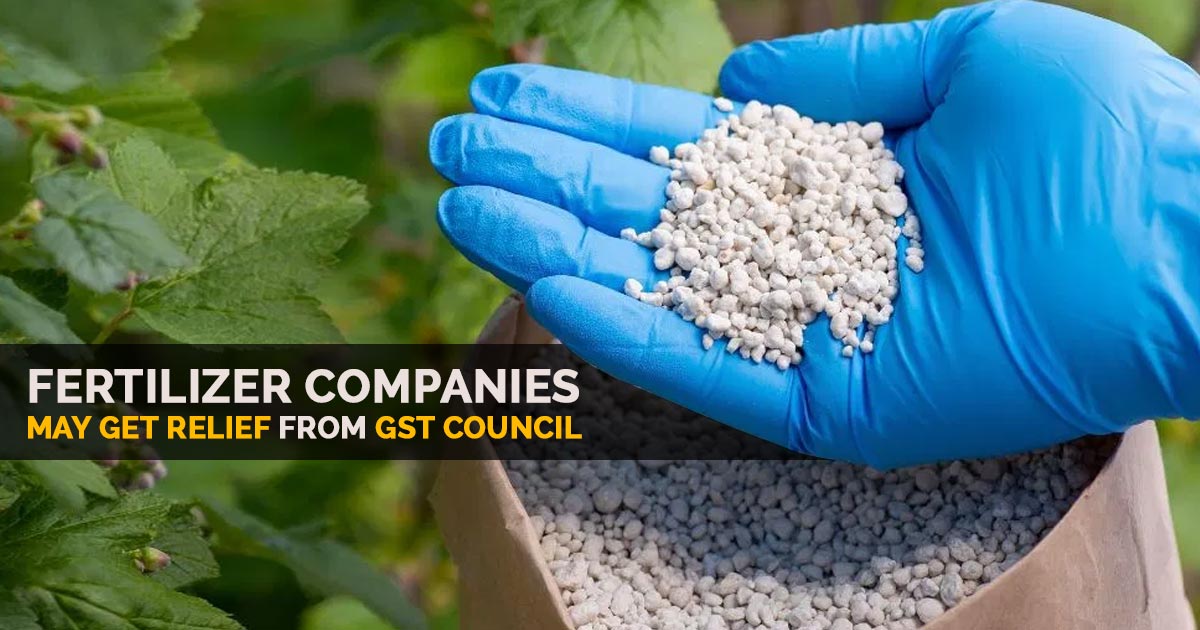
Certain relief to the fertilizer companies is on the cards as the GST council seems to suggest the issuance of the circular for releasing the refunds due to the inverted duty structure and subsidy.
After the general elections, the council is anticipated to meet.
Inverted Duty Structure (IDS) is directed to a higher duty on input and a lower duty on output. Fertilizer draws 5 per cent GST while inputs like ammonia (used in the production of P&K fertilizer) and packaging material draw 18 per cent leading to an inverted duty structure.
But the government delivers subsidies both on urea and P&K types of fertilizers, there are different procedures for calculation and that is the reason for the accumulation of input tax credit and resultant refund.
Urea is given to the farmers at a statutorily notified Maximum Retail Price (MRP) of ₹242 (45kg bag and (exclusive of charges for neem coating and taxes as applicable). The distinction between the delivered cost of urea at the farm gate and net market realisation by the urea units is provided as subsidy to the urea manufacturer/importer via the government under the Nutrient Based Subsidy Policy.
For Phosphatic and Potassic (P&K) Fertilizers a fixed amount of subsidy, decided on an annual/semi-annual basis, is delivered as per their nutrient content. As per this policy, MRP is fixed by fertilizer companies according to market dynamics at a reasonable level which is monitored by the government.
The GST rate on fertilizer products is 5 per cent. However, the GST rate on inputs like ammonia and phosphoric acid is higher at 18 per cent. This consequence is the accumulation of large amounts of unutilized input tax credits which have costs attached to them.
According to the Fertiliser Association of India (FAI), under the GST regime, subsidy by the government is precisely excluded from the value of supply in which the output GST is solely on the market realisation (i.e. subsidised value) of the fertilizers. Also, due to the lower rate of output GST instead of the GST rate on some of the inputs (including packing material), the output GST (in absolute value) liable to be paid is much lower than the input GST credit in the case of P&K fertilizer, mainly due to the subsidy.
Lawful Arguments
ITC gathered in the hands of fertilizer companies, for two reasons: the value of outward supplies being lesser compared to the value of inward supplies as of the subsidy for the sale of fertilizers. Additionally, the material used for re-packing the bulk fertilizers into smaller commercial quantities is levied to tax at a higher GST rate. But, companies do not get the refunds and now the matter has reached the courts.
Read Also: Parliament Panel: Center Should Suggest to Council for GST Rate Reduction on Fertilisers
As per the tax expert, the current norms for the inverted duty refunds and the industry thinks that for such refunds the fertilizers are entitled deeming a higher tax rate on the package materials.
However, there have been certain cases in which the GST council has contested such claims, specifically in the matters that comprise government subsidies. The same does not have the uniformity that consequenced in statutory disputes to multiple high courts and augmented working capital obligations for fertilizer companies.
Because of any fault on the part of suppliers or customers, ITC collection does not take place, there is a need for clarity on the above to ensure that there is a uniform approach to inverted duty refunds within the fertilizer sector. It ensures the efficient flow of working capital and lastly advantages both businesses and consumers.